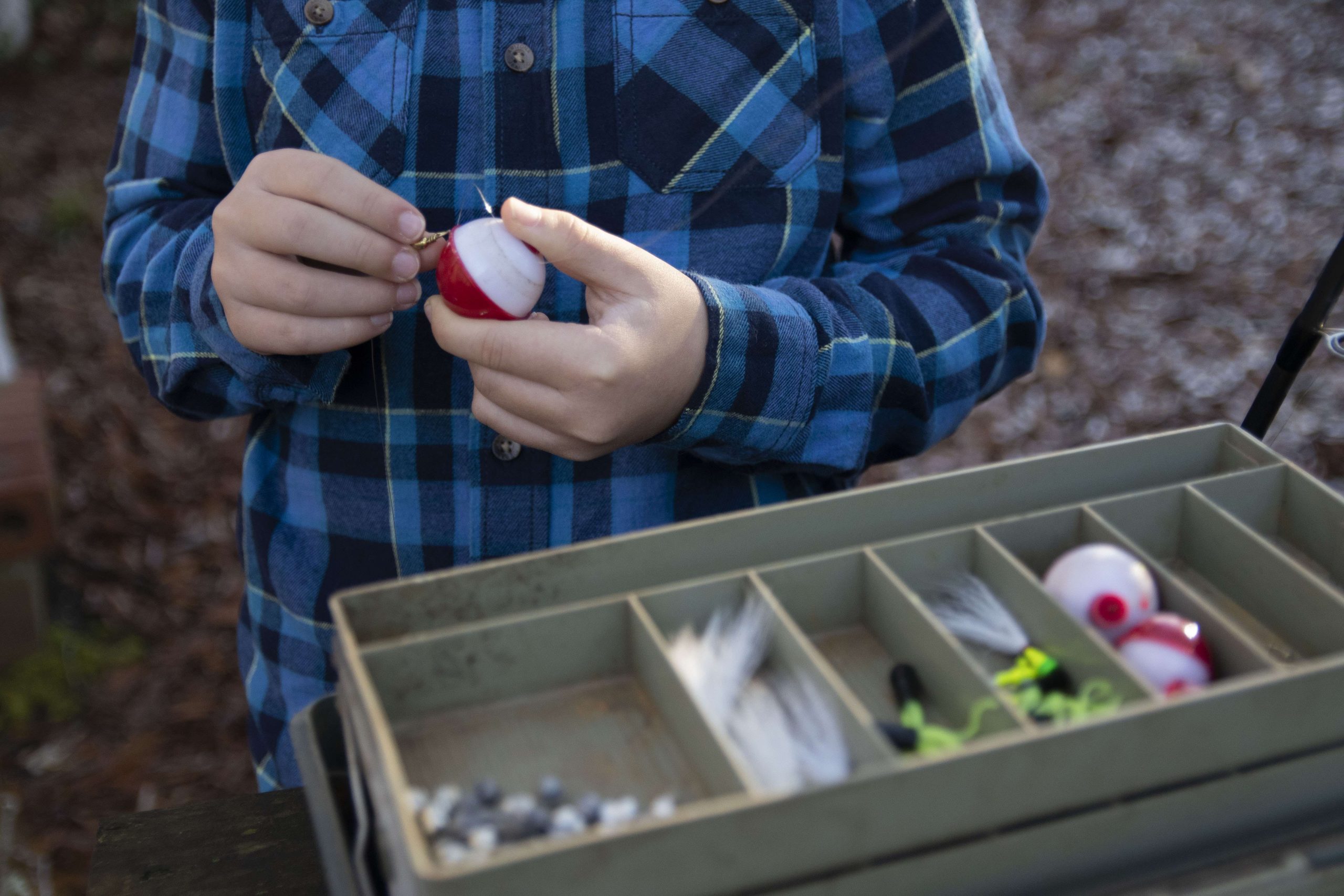
Different combinations of hooks, sinkers and bobbers can be used to catch all kinds of fish, but first you should learn some basic facts about each of these items.
Hooks
Let’s start with hooks and the unique way hook sizes are numbered. Sizes with a number followed by a zero increase in size as the number goes up. For example, a 3/0 (“three aught”) hook is one size larger than a 2/0, which is larger than a 1/0, etc. Sizes not followed by a zero grow smaller as the number increases. A size 8 hook is smaller than a size 7, which is smaller than a 6 and so forth. Sizes range from 32 (tiny hooks often used in trout flies) to 20/0 (massive hooks for sharks, tuna and other giants).
It’s important to match hook sizes to the tackle you use and fish you target. Use small hooks for small fish on light tackle. Use big hooks for big fish on heavy tackle. If you’re fishing for perch using an ultralight combo, for example, you wouldn’t want to use big bass hooks or the perch will evade capture. They can’t get those hooks in their mouths. On the other hand, if you hooked a trophy bass on a panfish hook using a medium-heavy rod, the too-small hook might bend and the fish will escape.
It isn’t necessary to learn the names of all hook styles (Aberdeen, Carlisle, Limerick, etc.) when getting started. Instead, start with prepackaged hooks labeled for the fish you’re after: panfish hooks, catfish hooks, bass hooks, etc. Those should work well until you learn more about the advantages of each style.
Sinkers
Sinkers are weights made of lead or other metals. They are molded in many different sizes and shapes, but all are used to sink baits to the fish’s level. Choice depends primarily on the type rig you’ll use, but stick with the smallest sizes that get the job done. The less the sinker weighs, the more natural and sensitive your rig will be.
Loosely divided, sinkers fit into two categories: fixed and sliding.
Fixed sinkers are pinched, twisted or tied onto the line. Often used varieties include split shot and rubber-core sinkers, which have grooves to hold the line.
Sliding sinkers reduce the resistance a fish feels when it bites. The weight rests on bottom while line slides through it. Examples include egg and bullet sinkers. Egg sinkers have a hole through the middle so the line moves freely. They are commonly used on live-bait rigs. Bullet sinkers have a cone shape ideal for gliding through weeds. They are most often used when fishing plastic worms.
Using different sinkers allows you to customize your fishing rig to suit conditions. Some have flat sides to prevent rolling in current or elongated shapes to reduce hangups between rocks. Others feature a shoe shape for walking baits across the bottom or a streamlined design for trolling. There’s a style for every need.

Bobbers
Whether you call them bobbers, floats or corks, these simple devices have several useful functions. They suspend your bait at a depth where fish are feeding. They let you know when a fish bites. They add weight for casting small lures, reduce snags and enable you to maneuver your bait to prime fishing spots.
Fishermen use two basic types: fixed and slip.
Fixed bobbers attach firmly to the line with spring-loaded hooks, pegs or other devices. They’re best suited for fishing waters no deeper than the length of your rod. This style keeps your bait at a preset depth while fishing.
In deeper water, or when casting long distances, use a slip bobber to eliminate casting problems caused by the long length of line between the bobber and hook. These slide up and down the line, and your entire rigging (bobber, sinker and hook) can be reeled to the rod tip. When cast, the bobber floats on the surface while the sinker pulls line through it. A bobber stop placed on the line halts line movement and suspends the bait at the preferred depth.
Both bobber types come in many styles, colors and sizes. When selecting one, choose a size that will float above the bait without being submerged. But keep it small enough so the fish you’re targeting can easily pull the float under without feeling resistance. A too-big bobber may cause the fish to drop the bait. Keep several styles and sizes in your tacklebox to match different fishing conditions and rigs.





